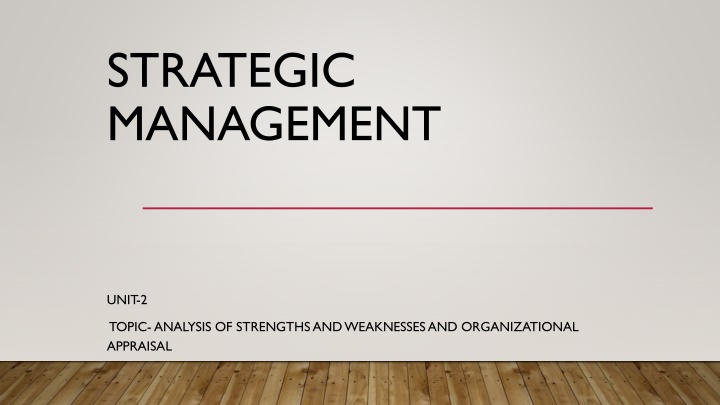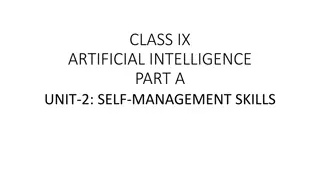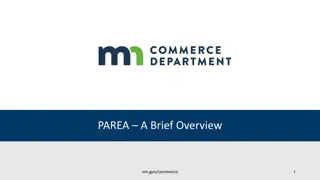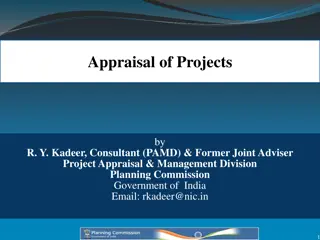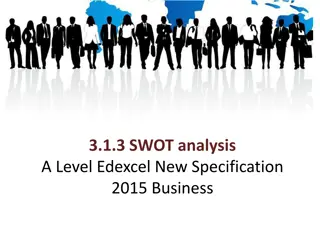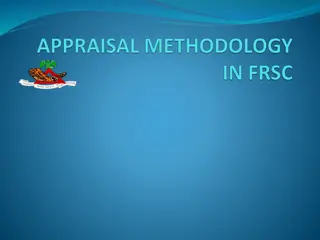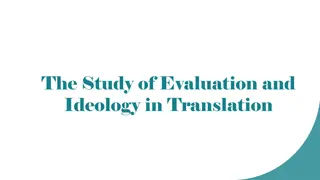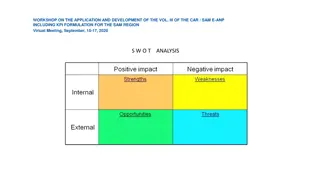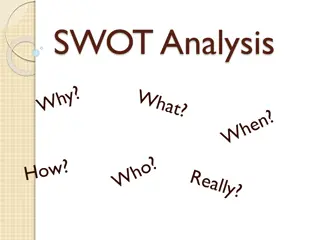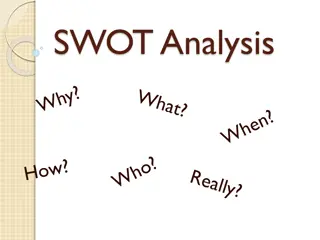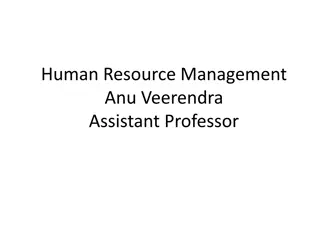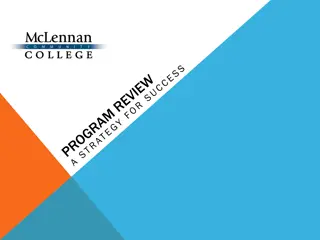Analysis of Strengths and Weaknesses in Organizational Appraisal
The appraisal of internal and external environments in a firm is crucial for decision-making. Understanding strengths, weaknesses, organizational resources, and behavior can lead to strategic advantage. Synergistic effects, competencies, and organizational behavior play key roles in shaping an organization's identity and character.
Uploaded on Apr 04, 2025 | 7 Views
Download Presentation

Please find below an Image/Link to download the presentation.
The content on the website is provided AS IS for your information and personal use only. It may not be sold, licensed, or shared on other websites without obtaining consent from the author.If you encounter any issues during the download, it is possible that the publisher has removed the file from their server.
You are allowed to download the files provided on this website for personal or commercial use, subject to the condition that they are used lawfully. All files are the property of their respective owners.
The content on the website is provided AS IS for your information and personal use only. It may not be sold, licensed, or shared on other websites without obtaining consent from the author.
E N D
Presentation Transcript
STRATEGIC MANAGEMENT UNIT-2 TOPIC-ANALYSIS OF STRENGTHS AND WEAKNESSES AND ORGANIZATIONAL APPRAISAL
ORGANIZATIONAL APPRAISAL The appraisal of external environment of a firm helps it to think of what it might choose to do. The appraisal of internal environment enables a firm to decide about what it can do.
Dynamics of internal environment Strategic advantage Org. capabilities Competencies Synergistic effects Strengths and weaknesses Org. resources Org. behavior Resource based theory. -Barney(1991)
ORGANIZATIONAL RESOURCES Organizational resources are all assets that a corporation has available to use in the production process. There are four basic types of organizational resources: human resources, capital resources, monetary resources and raw materials.Organizational resources are combined and used to create finished products.
ORGANIZATIONAL BEHAVIOR OB is the manifestation of the various forces and influences operating in the internal environment of an org. that create the ability for, or place constraints on, the usage of resources. OB is unique in the sense that it leads to the development of a special identity and character of an organization.
STRENGTHS AND WEAKNESSES Strength is an inherent capability which an org. can use to gain strategic advantage. Weakness is an inherent limitation or constraint which creates a strategic disadvantage for an organization. Strengths and weaknesses do not exist in isolation but combine within a functional area and also across diff. functional areas, to create synergistic effects.
SYNERGISTIC EFFECTS A synergistic effect is the result of two or more processes interacting together to produce an effect that is greater than the cumulative effect that those processes produce when used individually. Is a situation where attributes do not add mathematically, but combine to produce an enhanced or reduced impact. Such a phenomenon is known as the synergistic effect.
COMPETENCIES Are special qualities possessed by an org. that make them withstand the pressure of competition in the marketplace. When a specific ability is possessed by a particular org. exclusively or relatively in large measure, it is called a distinctive competence.
ORGANIZATIONAL CAPABILITIES Is the inherent capacity or potential of an org. to use its strengths and overcome its weaknesses in order to exploit the opportunities and face the threats in its external environment. It is also viewed as a skill for coordinating resources and putting them to productive use.
STRATEGIC AND COMPETITIVE ADVANTAGE Strategic advantage are the outcomes of org. capabilities. They are the results of org. activities leading to rewards in terms of financial parameters, such as profit or shareholder value and non-financial parameters such as market share or reputation. Strategic advantages are measurable in absolute terms using the parameters in which they are expressed.
